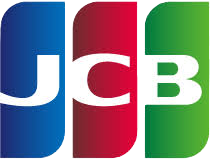Netting agreements allow parties to offset their obligations against each other, reducing the total counterparty risk. It also assists in capital allocation decisions by how to buy chia calculating the potential maximum loss a counterparty can create. Hence, stress testing is not just a regulatory requirement but a crucial risk management tool in the financial sector.
Why You Can Trust Finance Strategists
Counterparty risk is the risk that the other party in the transaction will not honor the agreement and fulfill its side of the deal. Fortunately, in financial markets this often isn’t an issue as counterparty risk is transferred to clearinghouses. The Dodd-Frank Act in the United States implemented comprehensive regulations for financial institutions, including measures to reduce counterparty risk in derivatives trading.
Create a Free Account and Ask Any Financial Question
11 Financial may only transact business in those states in which it is registered, or qualifies for an exemption or exclusion from registration requirements. 11 Financial’s website is limited to the dissemination of general information pertaining to its advisory services, together with access to additional investment-related information, publications, and links. Effective management of this risk is crucial for financial institutions to mitigate losses and maintain investor confidence. Settlement risk arises when there is a time lag between the execution of a transaction and its settlement. During this period, one party might fulfill their part of the transaction while the other party defaults.
Counterparty risk refers to the potential risk of loss that arises from the failure of an entity or the counterparty to live up to or fulfill its obligations agreed upon in a financial transaction. Counterparty risk is especially important for institutional investors and market makers, who often deal with large sums of money, complex financial instruments, multiple assets, and longer-term contracts. However, in many financial transactions, the counterparty is unknown and the counterparty risk is mitigated through the use of clearing firms. In fact, with typical exchange trading, we do not ever know who our counterparty is on any trade, and often times there will be several counterparties, each making up a piece of the trade. Institutional counterparties are organizations or entities such as commercial banks, hedge funds, investment banks, and other financial institutions.
- Pre-settlement risk refers to the risk that a counterparty will fail to meet its obligations before the settlement of a transaction.
- Each exchange of funds, goods, or services in order to complete a transaction can be considered as a series of counterparties.
- Collateral management involves the use of assets to secure a loan or other obligation.
- Counterparty risk, also known as default risk, is a financial risk inherent in contracts wherein a party may not fulfill their contractual obligations.
- Credit limit management involves setting a maximum exposure limit to a single counterparty to control the potential loss in case of default.
Unlocking Potential: How In-Person Tutoring Can Help Your Child Thrive
Over-the-counter (OTC) transactions are trades that occur directly between two parties without the oversight of an exchange. These transactions carry significant counterparty risk due to the lack of standardized contracts and regulatory oversight. Pre-settlement risk refers to the risk that a counterparty will fail to meet its obligations before the settlement of a transaction. This risk is particularly significant in long-dated contracts where the market value of the contract can change predictions point to bitcoin could quadruple in 2021 similar to the 2017 parabolic rally significantly over time. Well-drafted contracts usually attempt to spell out in explicit detail what each counterparty’s rights and obligations are in every conceivable circumstance, though there are limits.
Counterparty: Definition, Types of Counterparties, and Examples
Counterparty risk, also known as default risk, is a financial risk inherent in contracts wherein a party may not fulfill their contractual obligations. Counterparties are a fundamental part of any financial exchange trading transaction, from simple stock trades to complex derivatives. When trading or buying shares of stock, the counterparty could be anyone willing to sell shares in the same company.
There are general provisions for how counterparties are treated under the law, and (at least in common law legal systems) there are many legal precedents that shape how to buy divi the common law. As institutional investments and complex financial instruments become more common, counterparty risk and counterparty management have become even more critical. The term counterparty can refer to any entity on the other side of a financial transaction. This can include deals between individuals, businesses, governments, or any other organization.
Although stocks are typically seen as lower-risk investments, counterparty risk should still be considered, as the other party may default on the transaction. Counterparty risk gained greater visibility in the wake of the 2008 global financial crisis. AIG famously leveraged its AAA credit rating to sell (write) credit default swaps (CDS) to counterparties who wanted default protection (in many cases, on collateralized debt obligation (CDO) tranches). When AIG could not post additional collateral and was required to provide funds to counterparties in the face of deteriorating reference obligations, the U.S. government bailed it out. Derivatives, including futures, options, and swaps, are financial contracts that derive their value from an underlying asset. Counterparty risk in derivatives arises when one party fails to fulfill their contractual obligations, impacting the value of the derivative.




